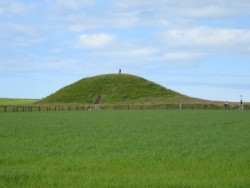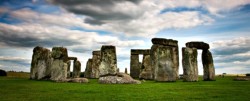Skorba Temples: Megalithic Structure in Malta
Located on the island of Malta, the Skorba Temples are a pair of prehistoric megalithic structures that offer valuable insights into the island’s ancient history.
These temples, which date back to around 3600 to 2500 BCE, are among the oldest and most significant archaeological sites on Malta, offering a glimpse into the Neolithic period of the Mediterranean.
Discovery and Excavation
The Skorba Temples were first discovered in the 1950s, although evidence of their existence was likely known to locals long before then. The site consists of two separate temple complexes situated near the village of Mġarr in the northwestern part of Malta.
Excavations have revealed the temples’ original design and structure, as well as a wealth of artifacts, including pottery, tools, and animal bones.
Structure and Architecture
The Skorba Temples, like other megalithic temples on Malta, are composed of large stone blocks that were carefully shaped and arranged. The temples are characterized by their semi-circular walls, which enclose a central space.
The use of large, flat stone slabs for the roofs and walls suggests the advanced construction techniques of the time.
The temples were built in multiple phases, with alterations and additions made over centuries, reflecting the evolving practices and beliefs of the people who built them.
The temples at Skorba are organized around a series of chambers, with the largest temple featuring three apsidal rooms.
These chambers are thought to have served ceremonial purposes, and it is believed that rituals and religious activities were held within the temples.
The alignment of the temples is thought to have been intentional, possibly related to astronomical events such as the solstices or equinoxes, which was a common feature of other megalithic sites across the Mediterranean.
Significance and Purpose
The exact purpose of the Skorba Temples remains a subject of debate among archaeologists. Like other temples of the same period on Malta, they are generally believed to have served as religious or ceremonial centers.
Some theories suggest that they were places of worship, where the island’s ancient inhabitants might have honored their gods or practiced fertility rituals, given the prominence of symbols associated with fertility found at other nearby sites, such as the Ġgantija Temples on Gozo.
The Skorba Temples also provide valuable evidence of the social structure and way of life in ancient Malta. The complex construction of the temples indicates that the society was capable of organized labor, skilled craftsmanship, and advanced planning.
Furthermore, the artifacts discovered at the site suggest that the people of Skorba engaged in agriculture, animal husbandry, and trade.
Connection with Other Temples on Malta
The Skorba Temples are part of a wider network of megalithic temples on Malta, some of which, like the Ġgantija Temples and the Tarxien Temples, are older and more expansive.
These temples are collectively recognized as a UNESCO World Heritage site, and they form an essential part of Malta’s prehistoric heritage.
The similarities between the structures, materials, and layouts of the temples suggest that they were part of a shared cultural and religious tradition across the island.
The Mysterious Megalith of Malta
The Skorba Temples offer a fascinating window into the lives of the ancient people who inhabited Malta thousands of years ago.
As one of the oldest known temple complexes in the world, they stand as a testament to the advanced architectural and societal skills of the Neolithic inhabitants of the island.
While much of the history surrounding the Skorba Temples remains shrouded in mystery, their continued study provides essential insights into Malta’s rich prehistoric past and its connection to the broader Mediterranean world.
































